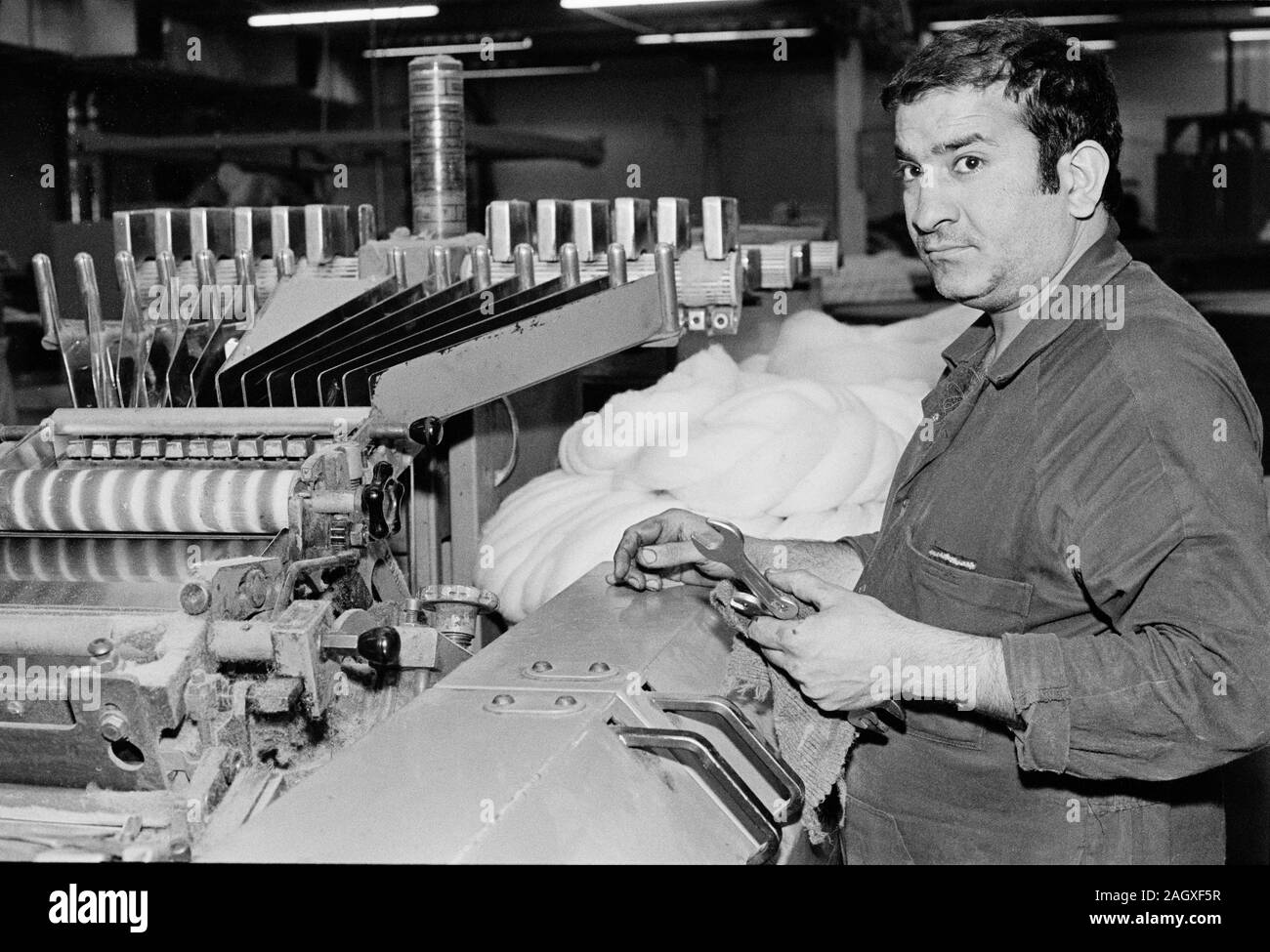Dawson'd Cashmere Wool factory, Bradford. West Yorkshire GB 1987.

Image details
Contributor:
© Garry Clarkson / Alamy Stock PhotoImage ID:
2AGXF5RFile size:
145.1 MB (15.4 MB Compressed download)Releases:
Model - no | Property - noDo I need a release?Dimensions:
8629 x 5878 px | 73.1 x 49.8 cm | 28.8 x 19.6 inches | 300dpiDate taken:
1987Location:
Dawson's Cashmere, LADYWELL MILLS, HALL LANE BD4 7DF Bradford GBRMore information:
This image could have imperfections as it’s either historical or reportage.
The Bradford born artist David Hockney once described my home town as the ultimate working-class city. The once world centre of wool production gave this West Yorkshire area its nickname ‘Worstedopolis’. This was the site of the infamous 1890 Manningham Mills strike and founding of the Independent Labour Party after the United States imposed a tariff on foreign cloth, leading to cuts in wages throughout the British textile industry. A century later, de-industrialisation and decline in British manufacturing took hold, civic pride was replaced with second hand shops, salvation army hostels, unemployment, political conflict and racial and religious tension. These are the first ever pictures I made as a young documentary photographer. The late 1980s was a time of rapid change. Alterations in the landscape, with a modern duel carriageway being built right through the heart of the city, where once cobbled streets and small lanes ran, reflected changes in the economic, social and political fabric. Bradford became a microcosm of changes in the country as a whole. Eric Pickles from Keighley, the more prosperous region, became council leader. Hand picked by then Prime Minster, Margaret Thatcher - a divisive figure testing out her Neoliberal free-market policies - he proceeded to bulldoze through drastic cuts to the council workforce and began the contracting out of services to private profit making companies against a resistant population: there seemed to be a demonstration every week, culminating in the mass burning of poll tax bills which reverberated back down to London, where 100, 000s of people demonstrated against the tax in Trafalgar Square culminating in Thatcher’s forced resignation.